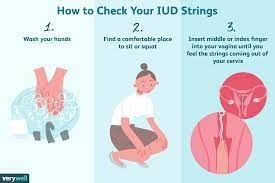Tongue-tie is a condition that affects the mobility of the tongue in infants. It is caused by a short, tight band of tissue that connects the bottom of the tongue to the floor of the mouth. This condition can cause difficulty with breastfeeding, speech, and other oral functions. It is important to understand the causes, symptoms, and treatments of tongue-tie in order to provide the best care for infants with this condition. This article will provide an overview of tongue-tie, including its causes, symptoms, and treatments.
What is Tongue-Tie and How Can it Affect Infants?
Tongue-tie, also known as ankyloglossia, is a condition in which the thin piece of tissue (lingual frenulum) that connects the underside of the tongue to the floor of the mouth is shorter than normal. This can restrict the movement of the tongue, making it difficult for an infant to breastfeed or bottle-feed.
Tongue-tie can affect infants in a variety of ways. It can cause difficulty with latching on to the breast or bottle, resulting in poor milk transfer and inadequate nutrition. It can also cause pain for the mother during breastfeeding due to poor positioning of the baby’s mouth. In addition, tongue-tie can cause speech delays, as the tongue is not able to move freely to form certain sounds.
Tongue-tie can be diagnosed by a healthcare professional, such as a pediatrician or lactation consultant. If the condition is identified, treatment may be recommended. This can include a simple procedure known as a frenotomy, which involves snipping the frenulum to release the tongue. This procedure is usually done in the doctor’s office and does not require anesthesia.
In conclusion, tongue-tie is a condition that can affect infants and cause difficulty with breastfeeding and speech delays. If diagnosed, treatment is available and can help to improve the infant’s quality of life.
How to Diagnose and Treat Tongue-Tie in Infants?
Tongue-tie, or ankyloglossia, is a condition in which the tissue connecting the tongue to the floor of the mouth is too short, restricting the movement of the tongue. This condition is most commonly seen in infants and can cause difficulty with breastfeeding, speech, and oral hygiene.
Diagnosis of tongue-tie is typically done by a healthcare provider during a physical examination. The provider will look for signs of restricted tongue movement, such as difficulty sticking out the tongue or difficulty lifting the tongue to the roof of the mouth. The provider may also check for any associated problems, such as a high-arched palate or a cleft lip or palate.
Treatment for tongue-tie typically involves a procedure called a frenotomy. During this procedure, a healthcare provider will use a sterile instrument to snip the tissue connecting the tongue to the floor of the mouth. This procedure is typically done in the office and does not require anesthesia. After the procedure, the infant may need to be monitored for any signs of infection or bleeding.
In some cases, tongue-tie may not require treatment. If the infant is able to breastfeed without difficulty and is not having any speech or oral hygiene issues, then the tongue-tie may not need to be treated. However, if the infant is having difficulty breastfeeding or has any associated problems, then treatment may be necessary.
In conclusion, tongue-tie is a condition in which the tissue connecting the tongue to the floor of the mouth is too short, restricting the movement of the tongue. Diagnosis is typically done by a healthcare provider during a physical examination, and treatment typically involves a procedure called a frenotomy. In some cases, tongue-tie may not require treatment, but if the infant is having difficulty breastfeeding or has any associated problems, then treatment may be necessary.
Conclusion
Tongue-tie is a condition that can have a significant impact on an infant’s ability to feed, speak, and swallow. It is important for parents and healthcare providers to be aware of the signs and symptoms of tongue-tie so that they can identify and treat the condition early. With proper diagnosis and treatment, tongue-tie can be managed effectively and the infant can go on to lead a healthy and happy life.




 Paragard IUD has given women the convenience of planning their families. However, the device can break within their bodies during the removal process. In addition, patients and doctors have cited that Paragard’s one or both arms get broken during removal and lodge in the uterus.
Paragard IUD has given women the convenience of planning their families. However, the device can break within their bodies during the removal process. In addition, patients and doctors have cited that Paragard’s one or both arms get broken during removal and lodge in the uterus.